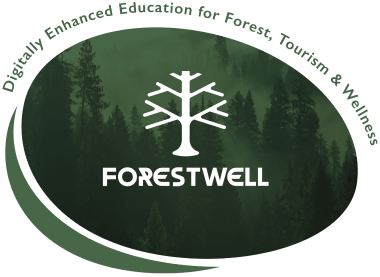
Topic Progress..
Ireland’s Outdoor Recreational Strategy 2023 – 2027 enables inclusive, safe and accessible opportunities to get outdoors. It will focus on increased participation for underrepresented groups, better education on how to enjoy the outdoors responsibly while respecting our environment as well. It acknowledges the essential role that landowners play in facilitating access to their lands and also acknowledges that this goodwill must be respected by users (Source Embracing Ireland’s Outdoors National Outdoor Recreation Strategy 2023 – 2027)
Forests at the Heart of Sustainable Development: Investing in Forests to Meet Biodiversity and Climate Goals. Forests, forestry and forest-based industries are moving towards a sustainable forest-based bioeconomy. The European Green Deal includes the EU Forest Strategy for 2030. This strategy, together with the EU Biodiversity Strategy for 2030, shapes the policy framework for the forestry sector in line with the UN 2030 Agenda for Sustainable Development. This paper provides an overview of sustainability in the forestry sector. It sets out the benefits for society, describes the regulatory environment and examines the challenges encountered by companies and investors operating in this sector. Finally, it addresses the role of public banks in helping to develop the sector.
Sustainable Tourism in Slovenia Exploring Green Tourism in Pomurje 2023
3 More Sustainable Stays in Ireland
1: Finn Lough, County Fermanagh
A luxury hideaway, with forest domes where you can sleep under the stars.
2: Two Green Shoots, County Cork
Nestled amid the trees in glorious Glengarriff, a stay here is true escapism.
3: Slieve Aughty Centre, County Galway
Glamping, camping and bedrooms with balconies: Slieve Aughty’s got it all!
Research Spotlight
A Three-Day Forest-Bathing Retreat Enhances Positive Affect, Vitality, Optimism, and Gratitude: An Option for Green-Care Tourism in Italy? Forest-bathing experiences can be seen as guided recreational activities led by non-clinical trained practitioners in the context of green, slow, and mindful tourism. Notwithstanding its growing practice, there is a lack of research on the psychological benefits which can help support nature-based tourism destination managers in unlocking the potential of this emerging tourism demand. This study will fill in this gap by testing the hypothesis that a three-day forest-bathing retreat, which fits with the most common type of holidays in Europe, will enhance positive affect, vitality, optimism, and gratitude as indicators of hedonic and eudaimonic well-being. Forty-four adults were involved in the residential program and filled-in self-report questionnaires before and after the experience to assess the well-being dimensions considered.
Physiological Effects of Forest Bathing: From Lowered Cortisol to Greater Parasympathetic Nerve Activity. A 2010 Chiba University study on the diverse physiological effects of forest bathing (from field experiments conducted in 24 Japanese forests – 280 participants) found that forest environments promote lower pulse rate, blood pressure and concentrations of cortisol–and greater parasympathetic, and lower sympathetic, nerve activity–than do city environments.
Access this research on Forest Bathing
Forest Bathing Increases Human Natural Killer Activity & Expression of Anti-Cancer Proteins. A small 2017 Nippon Medical School study, comparing the impact of a 3-day forest bathing trip to a city trip with exercise, found that the forest bathing trip significantly increased Natural Killer (NK) activity, numbers of NK cells, the expression of intracellular anti-cancer proteins, while significantly decreasing the concentration of adrenaline in urine–with the increased NK activity lasting more than 7 days. In contrast, the city trip did none of these things.
Access this research on Forest Bathing
Review: Forest Environments/Bathing Lead to Significant Reduction in Blood Pressure A 2017 systematic review from Japanese universities (15 studies, 732 participants) indicates that forest bathing has hypertensive effects: SBP and DBP in the forest environment were significantly lower than in the non-forest environment. In particular, the forest environment has a larger effect on lowering SBP in people with high blood pressure and in middle-aged and older people.
Forest Bathing and Nature Therapy: State-of-the-Art Review This 2017 state-of-the-art review from University of San Francisco spotlights the universe of research on the physiological and psychological effects of forest bathing from Japan and China–from heart rate metrics to psychological impact.
Access this research on Forest Bathing
Short Forest Bathing Experience Significantly Lowers Pulse Rate, Blood Pressure, While Reducing Anxiety A 2017 National Taiwan University study (128 middle-aged and elderly participants) found that a 2-hour forest bathing experience led to changes in autonomic nervous system activity and emotions. Heart rate and systolic and diastolic blood pressure were significantly lower after the short experience, while the mood scores for “tension-anxiety”, “anger-hostility”, “fatigue-inertia” and “depression-dejection” were also significantly lowered.
Access this research on Forest Bathing
More Reading
